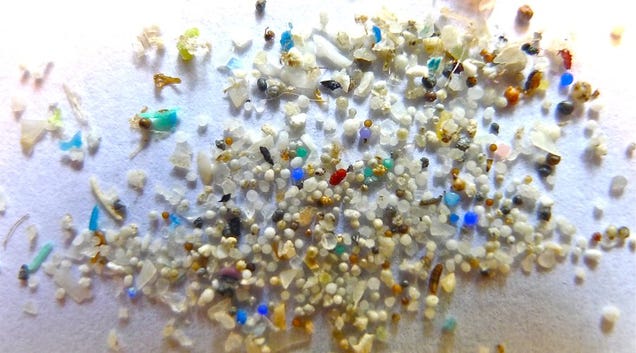What are microbeads?


Microbeads are polyethylene microspheres that are widely used in cosmetics, skin care and personal care industries. In personal care products they act to gently scrub away dead skin in much the same way a sponge would.
In what ways microbeads are affecting our lake?
Tiny bits of plastic, small scrubbing components used in hundreds of personal care products like skin exfoliants and soap, can slip through most water treatment systems when they wash down the drain. The plastic pollution found in the ocean mostly in the Great Lakes, which contain more than 20 percent of the world's freshwater. This not only affects us but it also affects our fish in the water. The 5 Gyres Institute estimates that a single tube of facial cleanser can contain 330,000 microbeads.
How do microbeads make it into the waterways?
When people use products containing micro beads, like a face wash, the beads go down the drain and travel through the water pipes into the water treatment facilities. Wastewater goes through several steps in the treatment process, before being discharged out to the Sanitary and Ship Canal, which carries treated sewage to the Des Plaines River. The problem is that the micro beads aren’t caught in the treatment process. They’re too small to be gathered in filters. During the treatment process, small microorganisms feed on the organic material that flows through the tanks at the water plant.
How can micro beads affect our fish?
These plastic beads are just the right size for fish and other aquatic creatures to mistake them for food. The beads could physically clog up their stomachs and prevent them from getting adequate nutrition. Plastics tend to absorb pollutants, so the beads could poison the small fish that larger fish prey on. The larger fish are eaten by humans, which poses a human health risk.
What can we do in order to stop using micro beads?
The most important thing you can do is to read the label on these products. Start by searching a product’s ingredient list for “polyethylene”, a common form of synthetic micro beads.
No comments:
Post a Comment